Photography
Overview
At the heart of Emory’s new communications strategy is an invitation to viewers to start to see and think differently. To achieve this we use unique visual vocabulary that challenges, questions, excites, and inspires. The photography should capture the magic of discovery and innovation, and the curiosity and exploration of Emory’s forward-thinking students and faculty. It reflects the environment with its empowering and colorful sense of place and people. The photography’s tone is imaginative, captivating, optimistic, inquisitive, passionate, driven, inspiring, and heroic. There are graphic photo treatments that enhance the photography and add an additional layer of surprise and perspective to the visual storytelling.
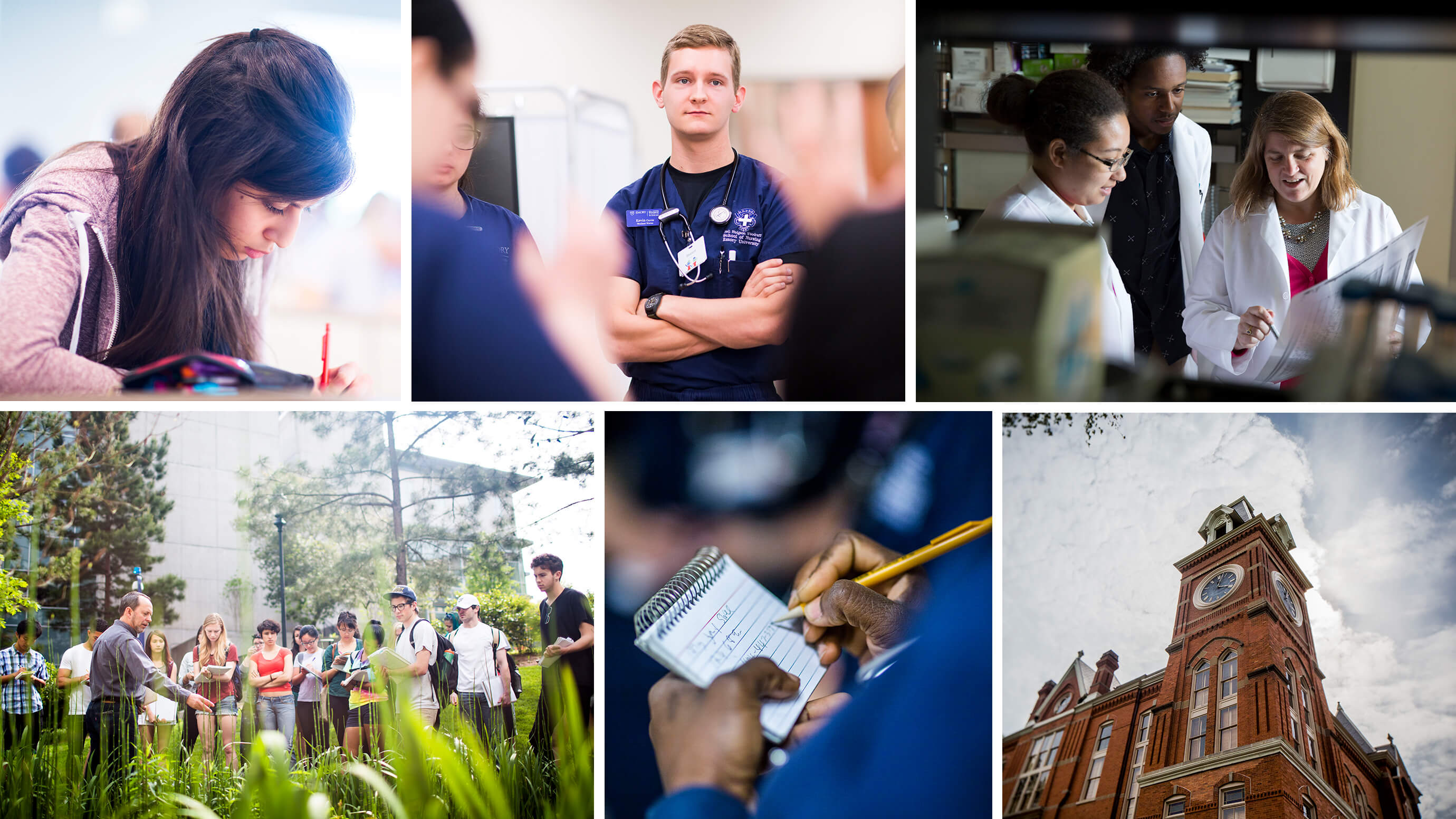
People
Capture students, faculty, and alumni in a way that feels authentic and illuminating. Strong composition with shallow depth of field play up the idea of vision. Follow, and even stretch, the rule of thirds for composition. Use the architecture and background elements to support and highlight the subjects. When selecting images with multiple people, keep diversity of age, race, gender, and ability in mind.
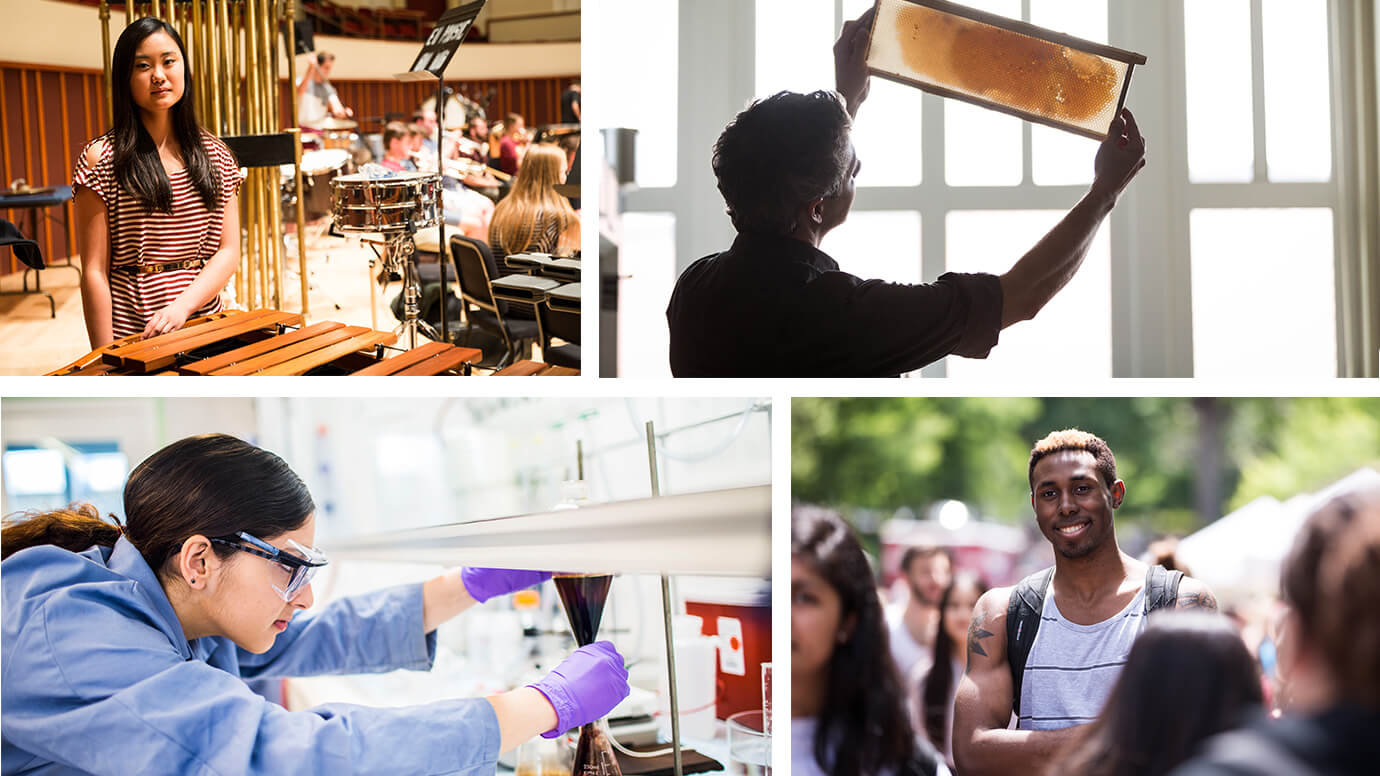
Campus
Emory’s lush and historic campus, as well as the modern, state-of-the-art facilities, create wonderful contrast and variety across the campuses. Capturing the character of campus and the surrounding Atlanta area gives people a sense of the environment that breeds innovation. Try to find shots of campus with people, even if they are in the background, to add life to the photography.
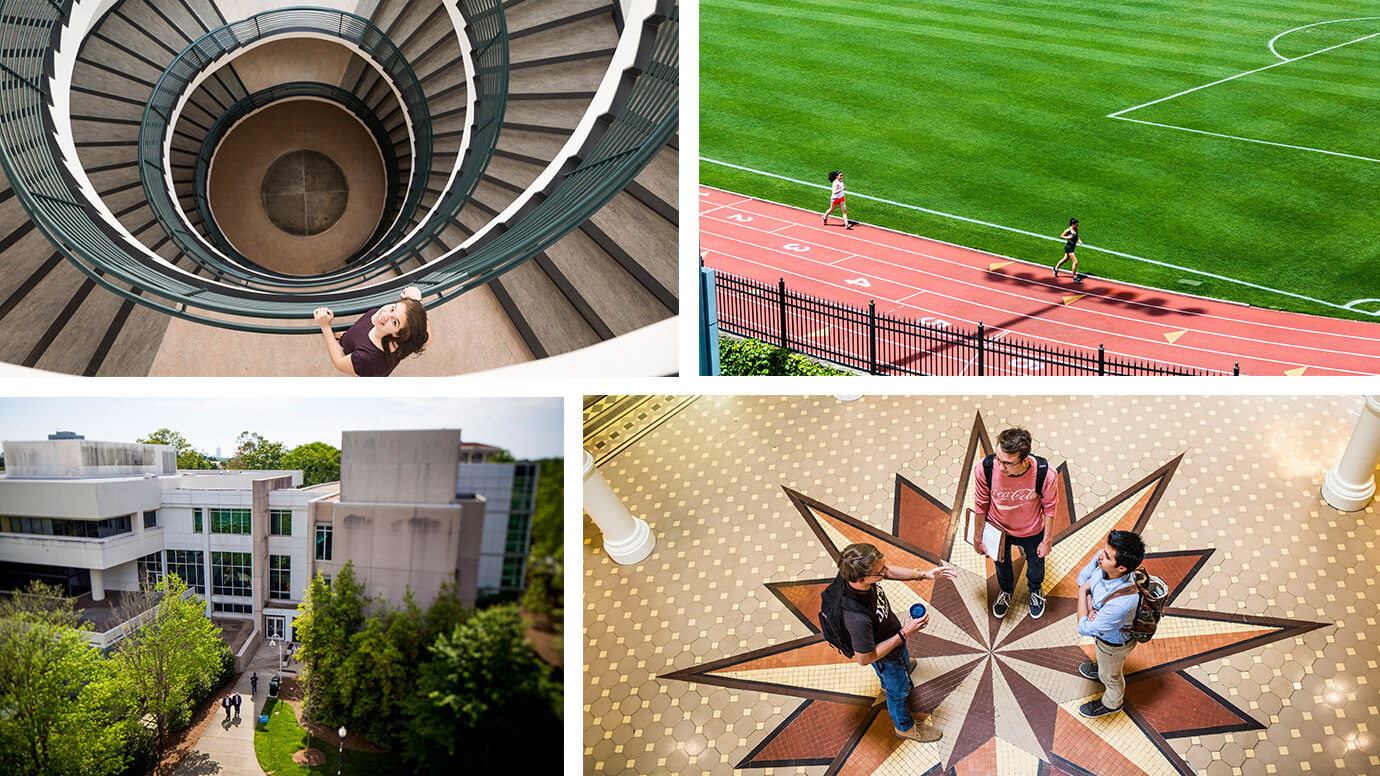
Student Life
Showcase the energy and spirit of Emory’s student body in fun and interesting perspectives. Showing students gathered in groups, working or playing, often make the most genuine moments. Emory is academically driven, but it’s also a very fun place to be. Student life photos should tell that story in a vibrant and authentic way.
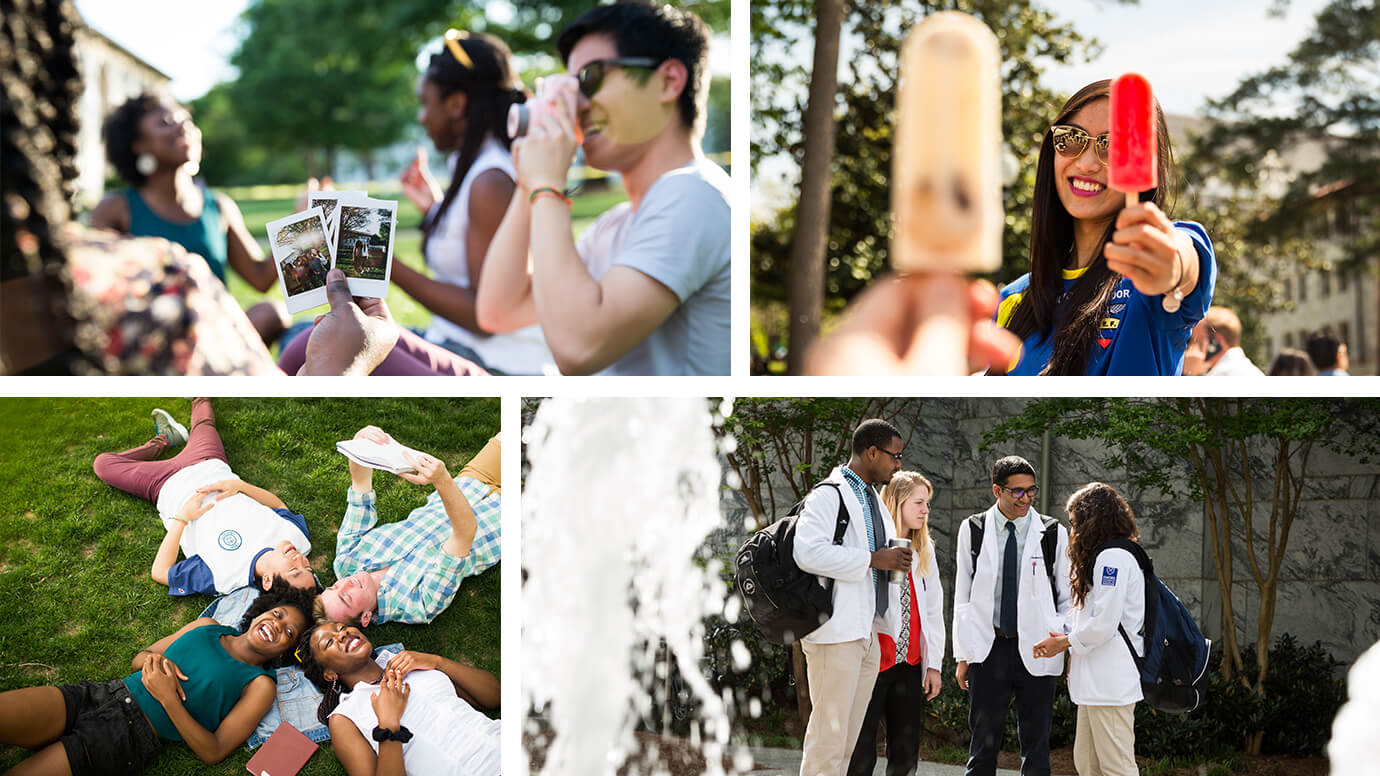
Academic
In the classroom, lab, or workspace we’ll want to capture the empowering environment through a sense of enthusiasm, mentorship, and personal drive. Highlight different scenarios, from group collaboration to interesting research-driven lab spaces. Consider unique angles and out of focus foreground/background elements that can help focus the viewer’s eye on the subject.
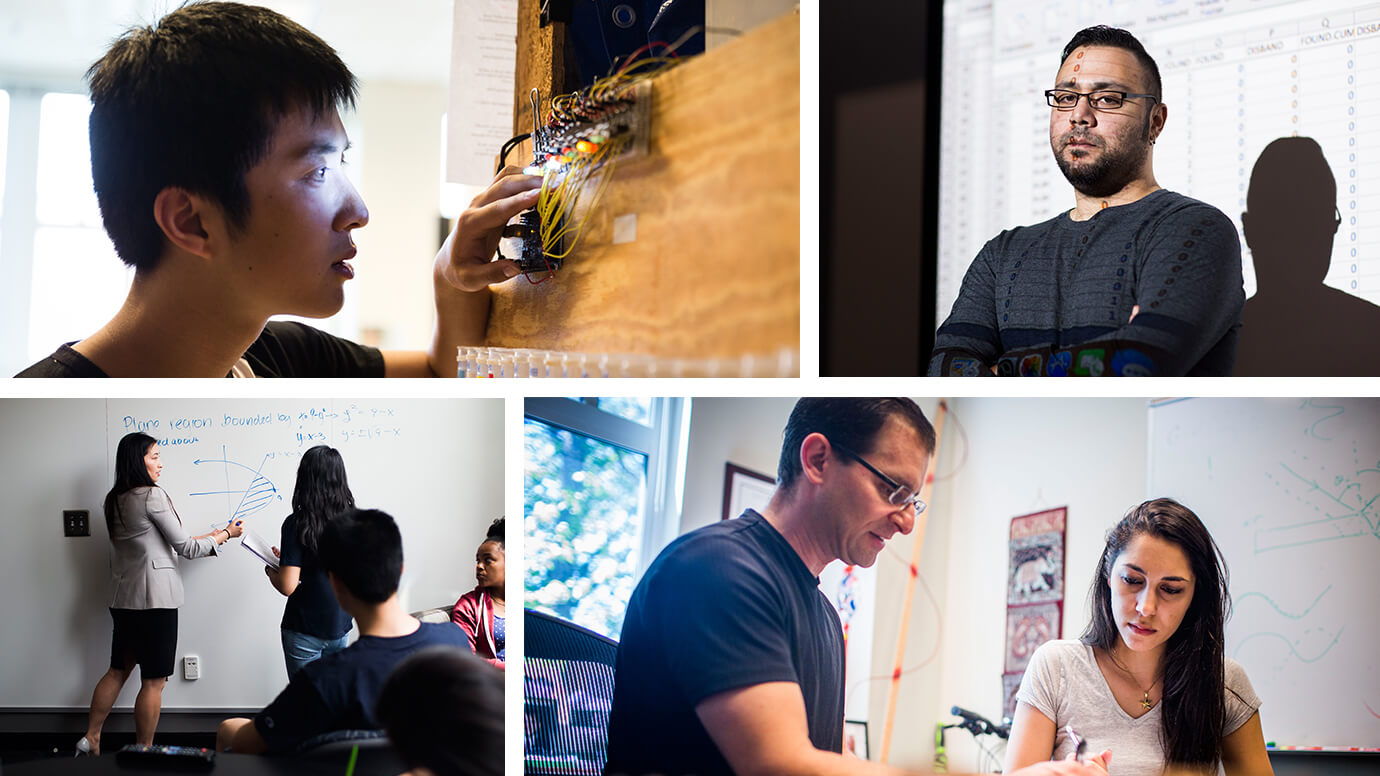
Best Practices
Acceptable Photo Adjustments
- Tone and Color
Color and tonal correction to ensure accurate reproduction of the original photograph. - Retouching and Editing
Technical touch-ups such as balancing or removal of flaws (dust spots, scratches, digital noise, artifacts, etc.) to achieve better reproduction. - Cropping
Cutting into a photograph to remove distracting elements and creating a more interesting composition. - Black and White
Conversion of a color image to black and white if context calls for it. - Graphic Overlay
Conversion of an image to a tinted color, giving a more graphic quality.
Unacceptable Photo Adjustments
- Content Alteration
Avoid content alteration—moving, adding, deleting, combining, stretching, flipping, shrinking, etc. - Over Editing
Avoid cropping an image so severely that the subject and emotion of the photo are compromised. - Tone and Color
Avoid combining multiple overlays or editing in a way that the subject matter becomes hard to discern or looks out of character.
Questions? Ideas?
Contact the Communications and Marketing brand team.
emory.branding@emory.edu